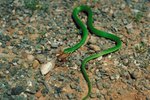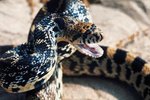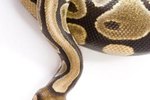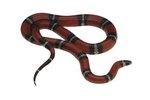
While snakes are rewarding pets, they lack the intelligence of mammals or birds, and will never come when they are called or fetch your slippers. Snakes experience the world so differently from humans that biologists are not even sure how to study their intelligence. Nevertheless, you can change your snake’s behavior in several ways, effectively “teaching” him how to act or react to various stimuli.
Feed on Dead Prey
In the wild, snakes primarily hunt live prey. However, some wild snakes do learn to eat dead prey opportunistically. In captivity, most keepers are able to teach their snake to readily accept prey that is not only dead, but previously frozen and thawed. The best way to accomplish this is by using hemostats or long tweezers to make a thawed rodent move as though it were alive. After several meals, you will probably not have to move the rodent in such a manner, and can simply present it to your snake, who will eagerly consume it.
Feed on Unnatural Prey
Many popular pet snake species have natural diets that are hard to replicate in captivity. Green tree pythons (Morelia viridis) provide an excellent example: in the wild, hatchlings usually consume lizards, frogs and insects—none of which are easy for keepers to provide. To overcome this problem, keepers teach their snake to accept small rodents by using scent transfer techniques. If you wash a pinky mouse and then rub it with a bit of shed lizard skin, the mouse stops smelling like a mouse and starts smelling like a lizard. Usually a snake will learn after a few meals that unscented mice are perfectly palatable, and begin eating them voraciously.
You Are Not a Threat
Snakes are prey for a wide variety of predators, and they are often quick to use defensive tactics when they encounter potential threats, such as their keeper. Accordingly, snakes that are new to captivity or freshly hatched may be quick to flee, strike, bite, defecate, hiss or musk when approached or handled. Over time, with gentle, deliberate handling and many nonthreatening interactions, many snakes learn that their keepers—and people in general—do not represent a danger, and they stop engaging in unpleasant behaviors.
Strike When the Cage Opens
Not all learned behaviors are desirable. Sometimes keepers stop interacting with their pet very much, only opening the cage door to feed their snake and occasionally clean the cage. When this occurs, the snake begins to learn that when the cage is opened, food usually appears. This causes the snake to become excited, and quickly strike at the first thing that enters the cage—potentially a keeper’s hand. Avoid this by interacting with your snake regularly, and be cognizant of associations that you may inadvertently introduce to feeding times. Some keepers advocate feeding snakes in a separate food container to try to prevent these associations, but this necessitates moving a snake that has just eaten when it comes time to return him to his cage, which is potentially disruptive to his digestion and is sure to raise his stress level.
References
Resources
Photo Credits
-
Creatas/Creatas/Getty Images




